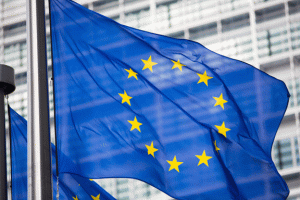EUROFER Says E.U. Steel Safeguard Measures Must Prevent Surge of Imports
The E.U.’s steel safeguard mechanism should work to prevent a “surge of imports” but should not “close the market,” European Steel Association (EUROFER) Director General Axel Eggert said Monday.
Need buying strategies for steel? Try two free months of MetalMiner’s Outlook
“The safeguard mechanism should be broad, but the purpose is not to close the market, as some steel importers have claimed. The EU safeguard mechanism explicitly serves only to prevent a further, sudden surge in imports resulting from deviated steel trade flows,” Eggert said.
European steel imports rose significantly between 2013 and 2017, according to EUROFER, up by 66%, with 18 million tons in 2013 and 30 million tons in 2017. In addition, steel imports in Q1 2018 rose 8% year over year, EUROFER reported.
In March, the European Commission launched a safeguard investigation in an effort to protect the European steel industry on the heels of the U.S. Section 232 tariffs on steel and aluminum. Last month, the U.S. imposed a 25% tariff on steel imports and a 10% tariff on aluminum imports. The E.U. won temporary exemptions from the tariffs, but the exemptions expire May 1 unless a deal to extend them is reached.
Eggert also addressed concerns expressed by some steel exporters regarding the potential for the safeguard measures to “close” the market.
“There have been claims made by some steel importers that the safeguard will close the EU market to imports,” Eggert said. “This is concretely untrue – these are claims made by undertakings that benefit from unsustainably low-priced, dumped imports. In practice, the safeguard will guarantee the open access of steel trade flows to the EU market at a nevertheless historically high level.”
On Monday, the E.U. requested to join the U.S.-China consultation on steel and aluminum at the World Trade Organization (WTO), Reuters reported. Hong Kong, Thailand, India and Russia have also filed requests to join the consultations, according to the report.
Earlier this month, China took the U.S. to the WTO over the tariffs, requesting 60 days of consultation on the matter, arguing the tariffs violated WTO rules.
MetalMiner’s Annual Outlook provides 2018 buying strategies for carbon steel
“The US practice severely violated the non-discrimination principle of the multilateral trading system and its commitments on tariff concession of the WTO and the rules and disciplines of safeguards, and harmed the legitimate interests of China as a WTO member,” a China Ministry of Commerce statement April 6 read. “As for that the US refused to have compensation negotiation with China according to WTO rules, China had to start the trade dispute settlement procedures, to safeguard its legitimate interests.”
The WTO process moves notoriously slowly, but the May 1 deadline for the Section 232 exemptions presents a far more near-term policy point for the E.U. steel industry.



Leave a Reply